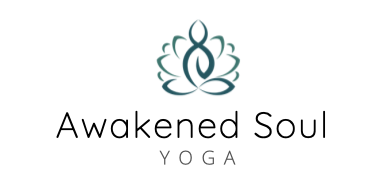FAQ
What is yoga?
When people first think of Yoga, they picture the practice of physical poses for the body, but really it’s so much more than that. Yoga is a lifestyle and a way of being which focuses on bringing balance to the body, mind and spirit.
The physical postures, (âsanas) are practiced in order to strengthen the body and gain flexibility for muscles and joints. This allows the body to move with more ease and grace and ultimately promotes optimal health. Breathing plays an integral part of the yoga process too. Movement and breath synchronise perfectly to create flow and to support the body when moving and changing between poses. The physical postures are designed to cleanse the internal organs of the body and flush out toxins. This in turn improves awareness, concentration and reduces stress levels and tension.
Meditation is also an integral part of a yoga practice and reduces mental noise and can be likened to physical exercise for the mind. It purifies and cleanses the mind creating space and clarity so we can see things as they really are, not how we’d like them to be.
Consider yoga a technique which can be used in daily life to restore balance, calm and inner peace.
I’m inflexible and uncoordinated, can I still practice yoga?
Absolutely! Flexibility is a wonderful side effect of a regular yoga practice, but people of any age, fitness level and size can do yoga and classes cater for a range of experiences. If you can breathe, you can practice yoga.
I’m really unfit and haven’t exercised for a while, plus I have an injury, can I still do a class?
It’s fine to come to a class even if you haven’t exercised for a while, feel stiff or are injured. Modifying the poses to accommodate your personal circumstances is an integral part of a yoga practice and I’m here to support you in this process. Alternatively, if you’d be more comfortable working one-on-one for a time, then private lessons can be arranged before you decide to join a general class.
How often should I come to class?
We all live hectic lives with little time left in the day for ourselves, so something is always better than nothing.
If your schedule allows for one class a week, fantastic, if you can squeeze in more, even better. As you become more familiar with Yoga, you can create a home practice. Five minutes here, 10 minutes there, it all counts.
What type of yoga do you teach?
Hatha Yoga is a traditional and orthodox style of yoga consisting of different âsanas (postures) which when linked together create sequences of movement. Along with correct alignment, breath control and stillness, yoga has the ability to slow down the fluctuations (thoughts) of the mind, bringing the body and mind into a more balanced space.
What should I wear to class?
Wear loose comfortable clothes that don’t restrict movements. You’ll be moving your arms and legs to increase range of motion, so consider leggings, shorts, T-shirts.
I’m not religious, is yoga for me?
Yoga is a practice for all of humanity and is Universal. It’s irrelevant what religion you practice, what ethnicity you are, your cultural background, beliefs, age or sexuality. Everyone can reap the physical and mental benefits yoga offers, including learning to quieten your busy mind, breathing correctly to help reduce stress, and practicing âsanas (physical poses) to purify the body.
Why is OM chanted at the end of class?
Om (also spelled Aum) is a mantra or sacred sound designed to purify the mind when it’s chanted either externally or internally.
The syllable Om is composed of three sounds; A-U-M (in Sanskrit, the vowels A and U combine to become O) and the symbol’s threefold nature is significant. It represents several important triads:
- the three worlds – earth, atmosphere, and heaven
- the three states of consciousness (waking, dreaming and deep sleep)
- the three major Hindu gods – Brahma, Vishnu, and Siva
- the three sacred Vedic scriptures – Rg, Yajur, and Sama
- the three cycles of life- creation, preservation, and destruction
OM represents all language and since world and language are interrelated, then OM represents all the world. It embodies the essence of the entire universe.
It’s said chanting OM brings the mind of the person who chants under control and encourages a feeling of peace and rest. It is also a way to close the practice, inviting this sense of calmness and encouraging the practitioner to remember what they’ve been taught and to continue about their day with this sense of calmness.
